What is inside the GHF food box being distributed in Gaza
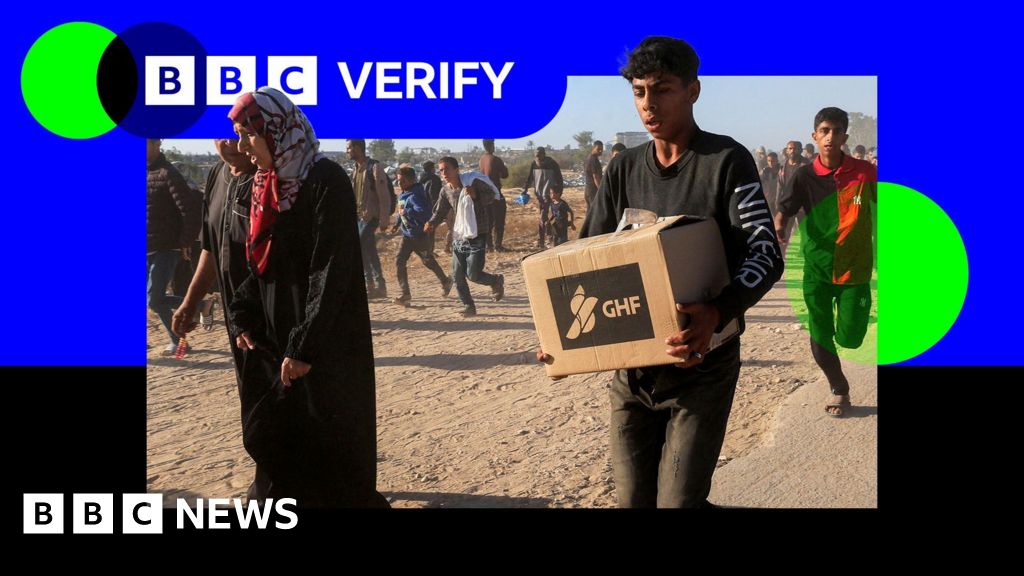
BBC Verify
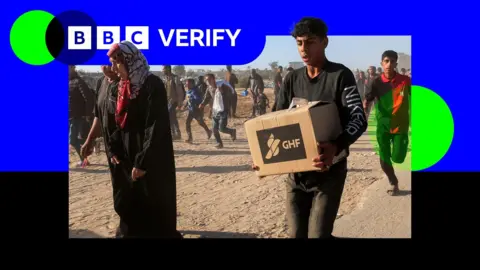 Reuters
ReutersMore than two million Palestinians in Gaza are facing a starvation crisis, with deaths from malnutrition rising by the day, according to the United Nations.
The Gaza Humanitarian Foundation (GHF), a group backed by Israel and the US, has been operating in Gaza since late May. It says that it has distributed 91 million meals, primarily in the form of food boxes.
While the BBC has been unable to see these boxes first-hand since Israel has blocked international journalists from entering Gaza, BBC Verify has examined photos and other information shared by the GHF and spoken to aid experts who have raised concerns about their nutritional value.
What’s in the boxes?
Videos have circulated online of Palestinians showing the contents of the boxes, but the GHF has only shared images of them this week.
Two pictures posted on X show mostly dried food items that require water and fuel to cook, including pasta, chickpeas, lentils, and wheat flour. Also included is cooking oil, salt and tahini, or sesame paste.
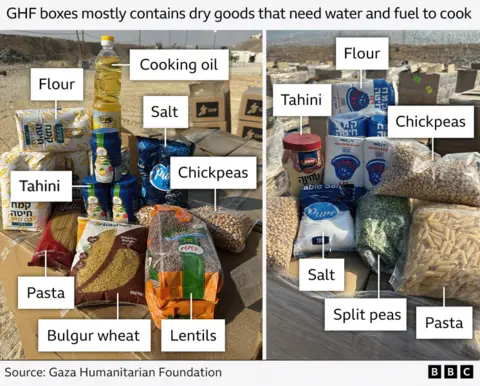
The GHF has said these boxes also contain some ready-to-eat food, like halva bars – a popular snack made from blending tahini or sesame paste and sugar.
The organisation has provided us with a table of what it describes as a “benchmark” list of items in each box, with a calorie breakdown.
A typical box contains 42,500 calories, and that “each box feeds 5.5 people for 3.5 days”. according to the table.
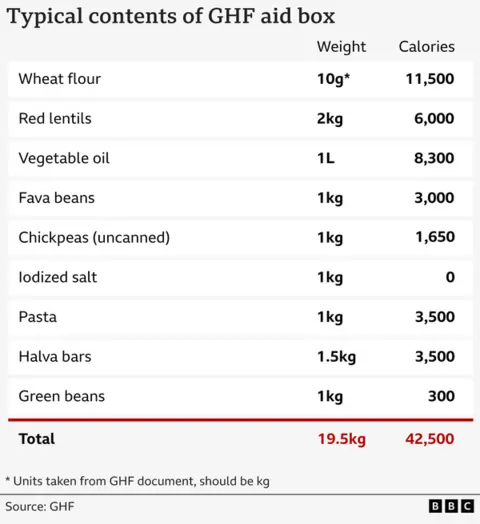
It occasionally includes substitute items like tea, biscuits, and chocolate, and is also delivering potatoes and onions, but these are not included in the nutritional figures, the GHF has said.
‘Serious weaknesses’
An international aid development professor from the London School of Economics analysed the list provided by the GHF to BBC Verify and said that while it could deliver sufficient calories needed to survive, it had “serious weaknesses”.
“In essence, this basket provides a full stomach but an empty diet,” Prof Stuart Gordon said. “The biggest flaw is what’s missing… This (is) very much a ‘first aid’ food basket, designed to stop the haemorrhaging effect that is acute hunger.”
“A diet like this over weeks would lead to ‘hidden hunger’, increasing the risk of diseases like anaemia and scurvy” he said.
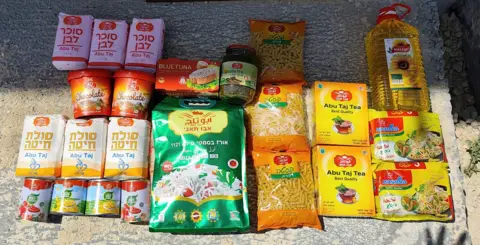 X: cogatonline
X: cogatonlineDr Andrew Seal, an associate professor of international nutrition at the University College London, said the food boxes were deficient in calcium, iron, zinc, and vitamins C, D, B12, and K. He added there was also a lack of foods to suit young children.
“Prolonged consumption of these foods, even if they were made available in adequate amounts, would lead to a range of deficiencies and serious health problems,” he said.
He added that unlike the GHF, agencies like the UN typically distribute food in bulk and supplement it with targeted nutrition for vulnerable groups. The World Food Programme (WFP) has said it also aims to deliver emergency supplies for young children and pregnant women.
The GHF did not respond to BBC Verify’s questions surrounding the advice it received about the nutritional contents of its aid boxes or whether it planned to address concerns raised by experts.
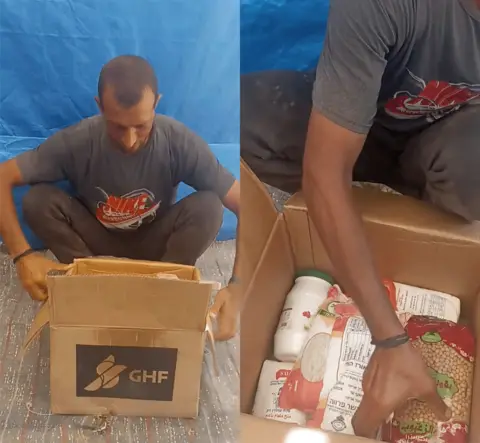 TikTok/@user427554577
TikTok/@user427554577For those who manage to get hold of a box, they still need water and fuel to cook the dried goods, despite the water crisis and severe fuel shortage facing Gaza.
The UN’s Office of Humanitarian Affairs (OCHA) warned this week that the water crisis in Gaza was rapidly deteriorating. It also warned that families have had to resort to unsafe and unhealthy cooking methods, such as using waste materials.
The WFP said in May that official supplies of cooking gas stopped and that it was being sold on the black market at prices up to 4,000% higher than pre-conflict levels.
UN Secretary General António Guterres said this week Gazans were facing grave shortages of basic supplies and that malnutrition was “soaring”.
Almost one in three people in Gaza are going days without eating, the UN’s food aid programme has warned.
“Malnutrition is surging with 90,000 women and children in urgent need of treatment,” the World Food Programme (WFP) said on Friday.
Additional reporting by Matt Murphy

Source link


